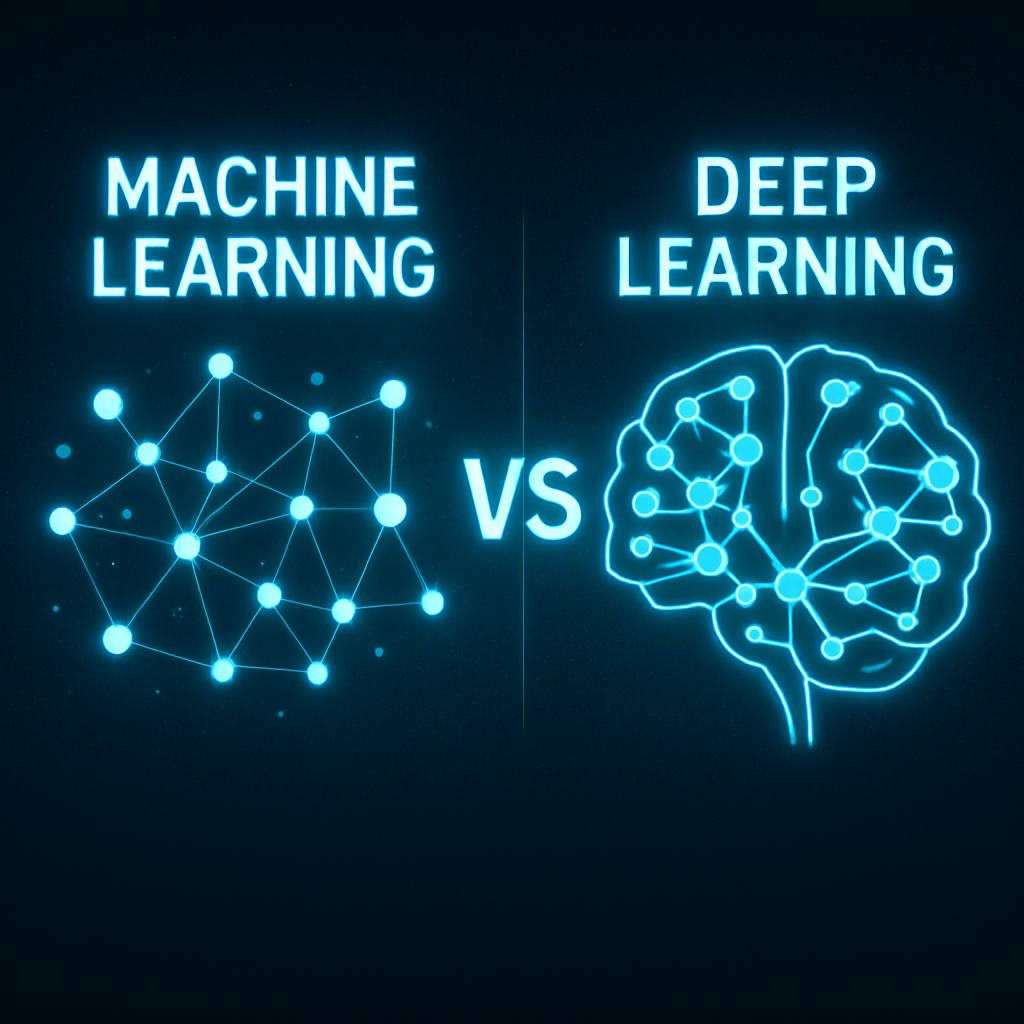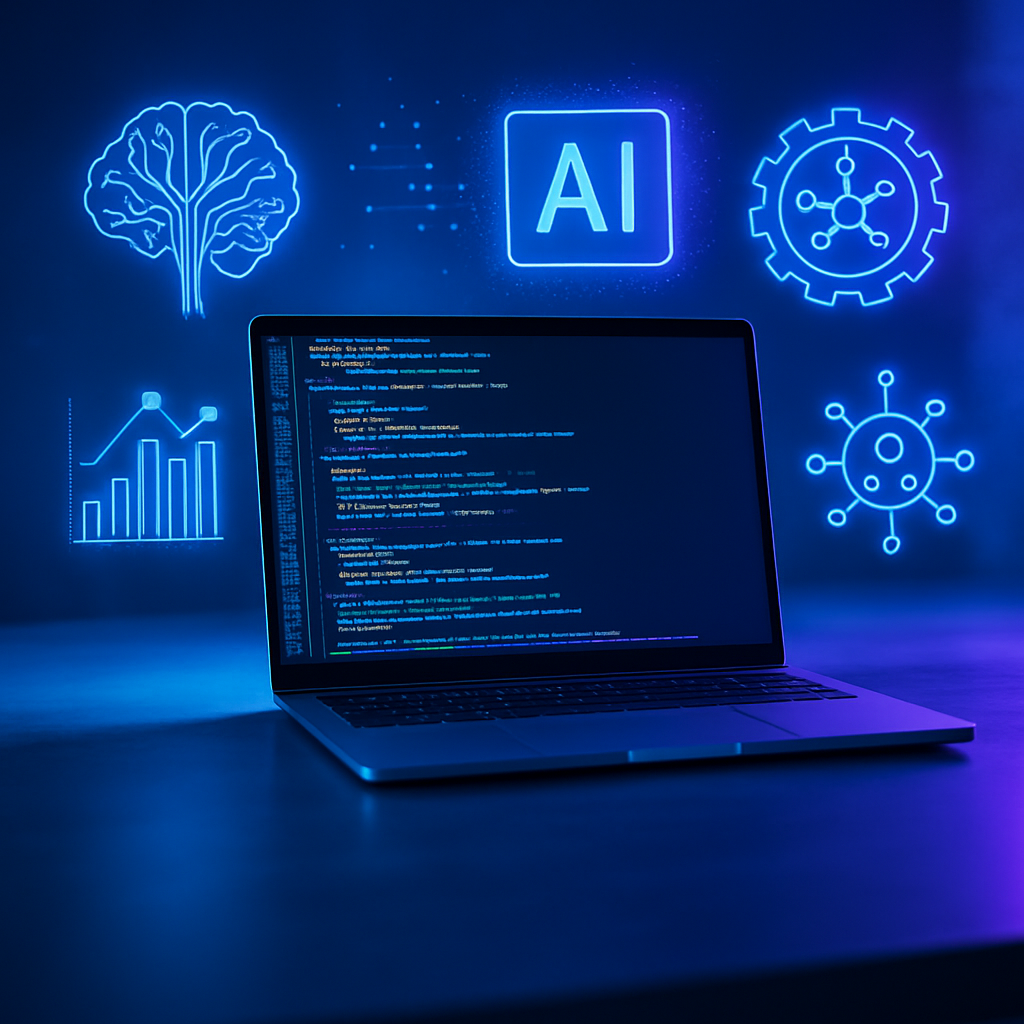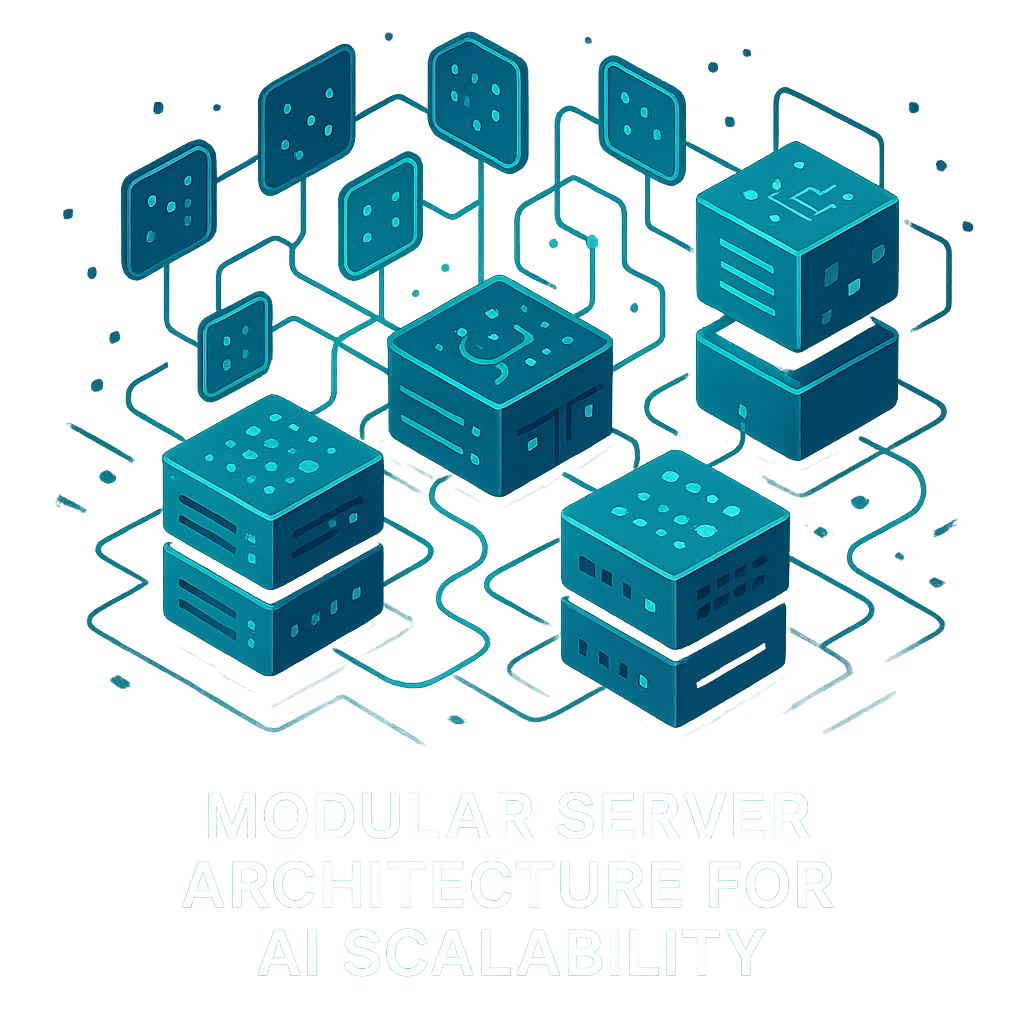Machine Learning vs Deep Learning: Which Is Right for Your Business?

Machine Learning vs Deep Learning: Which Is Right for Your Business?
Introduction: Unlocking Business Potential with AI
In today's data-driven world, Artificial Intelligence (AI) is no longer a futuristic concept but a vital strategic tool for businesses looking to gain a competitive edge. At the heart of this revolution lie two powerful subsets: Machine Learning (ML) and Deep Learning (DL). While often used interchangeably, they represent distinct approaches to AI, each with unique strengths and ideal applications.
Understanding the fundamental differences between ML and DL is crucial for any business leader or technology strategist. Choosing the right approach can significantly impact project success, resource allocation, and ultimately, your return on investment. This comprehensive guide will demystify Machine Learning and Deep Learning, explore their core functionalities, highlight their practical business applications, and help you determine which technology is the optimal fit for your specific business needs. By the end, you'll be equipped to make informed decisions that drive innovation and efficiency within your organization.
The Foundation of Predictive Intelligence
Machine Learning (ML) is a branch of AI that enables systems to learn from data, identify patterns, and make decisions with minimal human intervention. Instead of being explicitly programmed for every task, ML algorithms are "trained" on vast datasets, allowing them to adapt and improve their performance over time. Think of it as teaching a computer to learn from experience, much like humans do.
How Machine Learning Works:
- Data Collection: ML models require large amounts of relevant data (e.g., historical sales, customer demographics, operational logs).
- Feature Engineering: This critical step involves selecting and transforming raw data into meaningful 'features' that the algorithm can understand and use to make predictions. This often requires significant domain expertise.
- Algorithm Selection: Choosing the right algorithm (e.g., Linear Regression, Decision Trees, Support Vector Machines, K-Means) depends on the problem type (classification, regression, clustering).
- Training: The algorithm is fed the prepared data, adjusting its internal parameters to minimize errors in its predictions.
- Evaluation: The model's performance is tested on new, unseen data to ensure accuracy and generalization.
- Deployment & Monitoring: Once validated, the model is deployed to make real-time predictions, continuously monitored for performance degradation.
Machine Learning vs Deep Learning: Which Is Right for Your Business?
What Is Machine Learning?
Machine learning is a branch of artificial intelligence that focuses on creating algorithms that can spot patterns and learn from data, usually structured data, without needing to be programmed for every single task. The process usually involves human experts manually picking out the right input features. ML systems are a great fit for jobs where the connections between variables are fairly clear and the datasets aren't gigantic.
To put it simply: machine learning helps systems get better over time by learning from past data, allowing them to make predictions or automated decisions at a large scale.
What Is Deep Learning?
Deep learning is a more specialized part of machine learning. It uses multi-layered artificial neural networks (that's where "deep" comes from) to sort through huge amounts of complex, often unstructured data like images, sound, or plain text. Unlike regular ML, deep learning systems can automatically pull out the important features from raw data, which cuts down on the need for a person to do it manually.
In the real world, deep learning is the magic behind image recognition, language translation, and speech processing. It drives cool new technologies like self-driving cars and smart voice assistants.
Comparison: Machine Learning vs Deep Learning
Instead of a rigid table, let's break down the key differences in a more practical way:
- Data Needs: Machine learning works well with smaller, structured datasets. Deep learning, on the other hand, needs massive amounts of data, which is often unstructured.
- Feature Engineering: With machine learning, a person with domain knowledge usually has to select the features manually. Deep learning handles this automatically with minimal human help.
- Model Complexity: Machine learning models are generally simpler and easier to understand. Deep learning models are incredibly complex, often called "black box" models because it's hard to see how they make decisions.
- Hardware: You can get by with moderate hardware for machine learning. Deep learning is a resource hog and often requires powerful GPUs to function well.
- Common Uses: Machine learning is great for things like credit scoring, predicting customer churn, and fraud detection. Deep learning is used for image analysis, natural language processing (NLP), voice assistants, and self-driving cars.
- Training Time: Machine learning models are quicker to train. Deep learning is much slower and takes a lot of computational power.

Business Applications: Where ML and DL Shine
Both Machine Learning and Deep Learning offer transformative capabilities across various industries. Here’s a look at their primary use cases:
H3: Machine Learning Applications:
- Predictive Analytics: Forecasting sales, demand, stock prices, or customer churn.
- Fraud Detection: Identifying unusual transaction patterns in financial services.
- Recommendation Systems: Powering personalized product recommendations on e-commerce sites (e.g., "customers who bought this also bought...").
- Spam Filtering: Classifying emails as legitimate or spam based on content and sender patterns.
- Customer Segmentation: Grouping customers based on behavior for targeted marketing campaigns.
- Credit Scoring: Assessing the creditworthiness of loan applicants.
- Process Optimization: Optimizing logistics, supply chain, and manufacturing processes.
H3: Deep Learning Applications:
- Computer Vision:
- Image Recognition: Identifying objects, people, and scenes in images (e.g., facial recognition, medical image analysis, autonomous vehicles).
- Object Detection: Locating and classifying multiple objects within an image or video.
- Image Generation: Creating realistic images from text descriptions or modifying existing ones.
- Natural Language Processing (NLP):
- Speech Recognition: Converting spoken language into text (e.g., virtual assistants like Siri, Alexa).
- Machine Translation: Translating text between languages (e.g., Google Translate).
- Sentiment Analysis: Determining the emotional tone of text (e.g., customer reviews, social media monitoring).
- Chatbots and Virtual Assistants: Powering intelligent conversational agents.
- Drug Discovery: Predicting molecular interactions and designing new compounds.
- Autonomous Driving: Processing sensor data (cameras, LiDAR) for navigation and obstacle avoidance.
- Gaming: Developing more intelligent and adaptive AI opponents.
Machine Learning vs. Deep Learning: Which is Right for Your Business?
Deciding between ML and DL depends on several critical factors specific to your business problem and available resources:
Choose Machine Learning if:
- You have limited data: If your dataset is not exceptionally large (thousands to tens of thousands of records), traditional ML models are often more effective and less prone to overfitting.
- Interpretability is crucial: If your business requires understanding why a decision was made (e.g., credit approvals, medical diagnoses), ML models often offer better transparency.
- Computational resources are constrained: ML models generally require less powerful hardware for training and inference.
- Feature engineering is feasible and beneficial: If domain experts can effectively identify and extract relevant features, ML can leverage this human insight powerfully.
- The problem is relatively straightforward: For tasks like simple regressions, classifications, or clustering with structured data, ML algorithms are typically sufficient and more efficient.
Choose Deep Learning if:
- You have vast amounts of data: DL thrives on big data. The more data you have, the better its performance.
- The problem involves unstructured data: DL is exceptionally good at handling complex unstructured data like images, audio, video, and raw text.
- Automatic feature extraction is desired: If manual feature engineering is too complex, time-consuming, or impossible, DL's ability to learn features automatically is a major advantage.
- You have significant computational resources: Access to powerful GPUs/TPUs is essential for training deep neural networks.
- The problem requires state-of-the-art performance in complex domains: For tasks like advanced computer vision, natural language understanding, or speech recognition, DL consistently outperforms traditional ML.
- High accuracy is paramount, even at the cost of interpretability: If absolute prediction accuracy is the top priority, DL often delivers superior results.
Hybrid Approaches:
It's also important to note that these aren't mutually exclusive. Many real-world solutions combine elements of both. For instance, you might use a deep learning model to extract features from unstructured data, then feed those features into a traditional machine learning model for final classification or regression. This hybrid approach can leverage the strengths of both methodologies.
Implementation Considerations for Your Business
Regardless of whether you choose ML or DL, successful AI implementation requires careful planning:
- Data Strategy: Do you have clean, labeled, and sufficient data? This is the backbone of any AI project.
- Talent & Expertise: Do you have data scientists, ML engineers, and domain experts on your team?
- Infrastructure: Do you have the necessary computing power and storage?
- Business Problem Definition: Clearly define the problem you want to solve and the measurable outcomes.
- Scalability: Can your chosen solution scale with your business growth and increasing data volumes?
- Ethical AI & Bias: Consider potential biases in your data and models, and ensure ethical deployment.
Machine Learning, Deep Learning, and Artificial Intelligence: How Do They Relate?
- Artificial intelligence (AI): This is the broad science of making machines and software that have human-like intelligence.
- Machine learning (ML): This is a key part of AI that lets systems learn from data automatically.
- Deep learning (DL): This is an even smaller subset that uses deep neural networks for advanced pattern recognition.
Think of it like this: AI ⟹ Machine Learning ⟹ Deep Learning
Industry Adoption: Who Uses AI and ML?
Here are some of the common industries jumping on the machine and deep learning bandwagon:
- Manufacturing: For predictive maintenance, quality control, and automated robots.
- Finance: For risk assessment, algorithmic trading, and fighting fraud.
- Healthcare: For diagnosing diseases, optimizing treatments, and monitoring patients.
- Retail & E-commerce: For personalization, forecasting demand, and segmenting customers.
- Transportation & Logistics: For route optimization, self-driving vehicles, and automating supply chains.
Custom AI and ML solutions are being adopted quickly all over the world. Specialized providers like The Ninja Studio offer tailored, scalable options for businesses everywhere.
Custom vs Off-the-Shelf AI Solutions
Custom AI/ML
Pros: It’s designed specifically for your business needs, gives you a competitive edge, and can scale with your unique workflows.
Cons: It has a higher upfront cost and takes longer to develop at first.
Off-the-shelf AI/ML
Pros: It’s faster to get up and running, costs less, and has proven features for common problems.
Cons: You can't customize it much, it might not fit your specific processes, and it offers less of a strategic advantage.
You should go with custom solutions when you have very specific needs, unique data, or want a competitive advantage. Choose off-the-shelf when speed and cost are your main concerns and your use cases are standard. For guidance, consider consulting with one of the top ai development companies.
How to Decide: Is Machine Learning or Deep Learning Right for My Business?
To get started, ask yourself these questions:
- Do you have huge amounts of labeled, unstructured data (like images or voice recordings)? If so, Deep Learning might be your best bet.
- Are your business problems more straightforward with clear, structured data? Machine Learning will probably give you a better ROI and get you to market faster.
- Do you need to be able to explain how your model works for regulatory reasons? ML models are more transparent.
For expert help, it's a good idea to work with a proven provider of custom software development services like The Ninja Studio. They can help you figure out the best approach, design it, and implement a solution that's calibrated to your business.
Conclusion
To sum up the machine learning vs deep learning debate, Machine Learning is perfect for businesses that have structured data, need models that are easy to understand, and are tackling classic automation problems. Deep Learning opens up new doors with complex, unstructured data, but it also demands a bigger investment in money, expertise, and data. Many companies get the best results by using a mix of both, applying each where it makes the most sense. For businesses anywhere in the world, partnering with a specialized AI and machine learning provider like The Ninja Studio ensures your solutions are built to scale, stay compliant, and deliver the biggest impact.
FAQ
1. What is the difference between machine learning and deep learning?
Machine learning typically needs structured data and manual feature selection, while deep learning uses layered neural networks to process unstructured data and pull out features automatically.
2. How does machine learning work?
Machine learning looks at historical data with statistical models to find patterns. It then uses these patterns to make accurate predictions or automated decisions.
3. What is deep learning?
Deep learning is a type of machine learning that uses multi-layered neural networks to learn complicated patterns from huge amounts of data. This allows it to do advanced tasks like recognizing images and speech.
4. Which is better: deep learning or machine learning?
Neither one is always better. ML is great for structured data and when you need to explain the model's decisions. DL is better for complex, unstructured data and when you need a more flexible model.
5. Is deep learning part of artificial intelligence?
Yes, deep learning is a subfield of machine learning, which in turn is a subfield of artificial intelligence.
6. What are key applications of machine learning?
Common uses are predictive maintenance, fraud detection, customer segmentation, demand forecasting, and helping with healthcare diagnoses.
7. How to start with deep learning?
A good way to start is by learning the basics of neural networks and using frameworks like TensorFlow or PyTorch to work on real-world problems with large datasets.
8. Which industries use AI and machine learning?
Industries like finance, healthcare, manufacturing, retail, logistics, and entertainment all use AI and ML to automate tasks, make predictions, and optimize their operations.
9. How do I implement machine learning in my software?
Start by identifying a use case, then gather and prepare your data. After that, you select the right algorithms, train and test your models, and finally integrate the solution into your business workflow.
10. Can AI replace traditional software development?
AI can automate many parts of how software behaves, but it can't completely replace traditional software development. The most common approach is a hybrid one that combines both.

%201.png)


.svg)




.svg)
